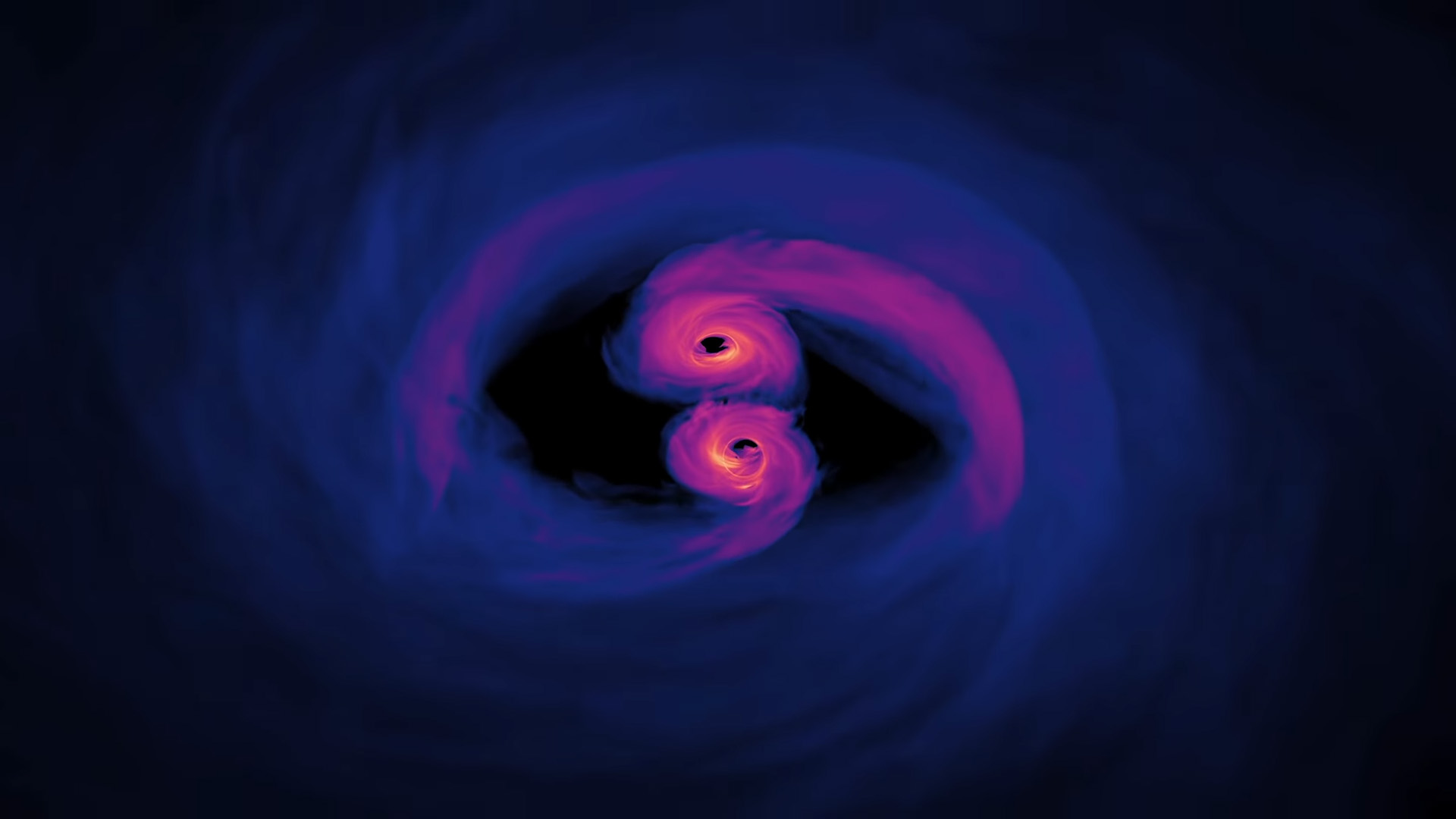Scientists believe a galaxy roughly a billion light-years away could be home to two supermassive black holes set to collide. A study says that the colliding black holes may intersect as soon as the next three years. When it happens, astronomers believe it could teach us a lot about black holes and even unlock more about the mysteries of the universe.
The possibility of colliding black holes may be imminent

Scientists believe the two supermassive black holes are located in the center of the galaxy SDSS J1430+2303. They say that fluctuations in the light from the center of the galaxy look very similar to what they’d expect two black holes on a collision course to look like. They also believe that the two black holes could have a combined mass of around 200 million Suns.
But, the collision or even the existence of these two supermassive black holes is not guaranteed. At over a billion light-years away, it’s hard to say exactly what is happening at the center of SDSS J1430+2303. But scientists are convinced that it could be two colliding black holes. And, that if we’re able to observe it happening, it could teach us a lot.
But, let’s look at the evidence. After all, this galaxy is over a billion light-years away, so getting information isn’t as easy as walking next door. First, we know that galaxies are home to supermassive black holes. Our own Milky Way has a supermassive black hole, too. We also know that galaxies sometimes collide – quite often – and when they do, they create new galaxies.
By that logic, it also stands to reason that black holes can collide. And it’s this possibility– and the idea that mergers could lead to the massive black holes we know of – that has driven research into this hypothesis forward. As a result, scientists responsible for a new study shared in the pre-publication server arXiv, wish to study it more in-depth.
The study has been accepted for publication in Astronomy and Astrophysics and details the findings they’ve made in SDSS J1430+2303 thus far. Currently, the light fluctuations in the galaxy may appear to be two colliding black holes getting closer and closer. However, it could also be something else entirely. That’s just the nature of space and the many mysteries surrounding it.







